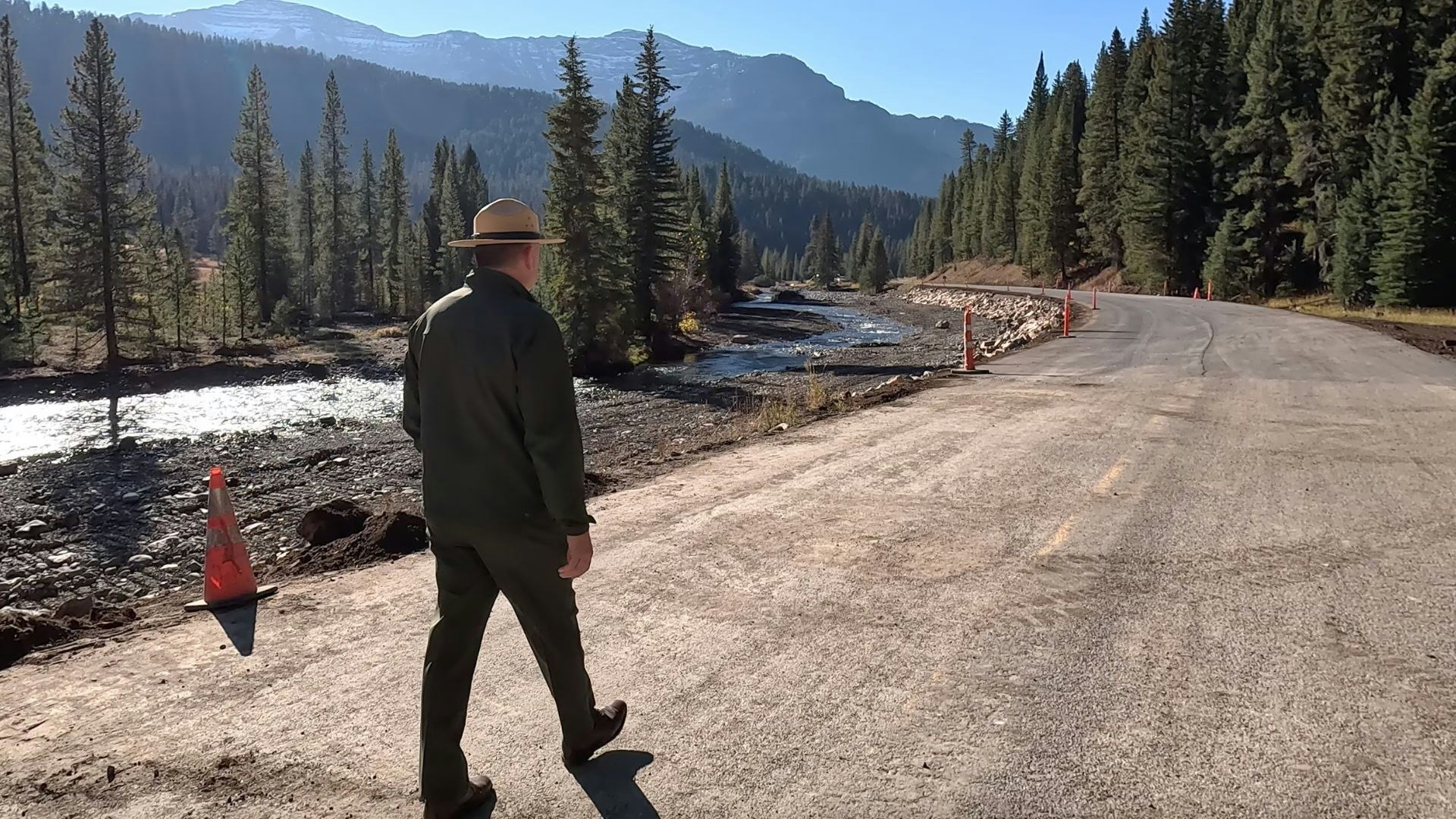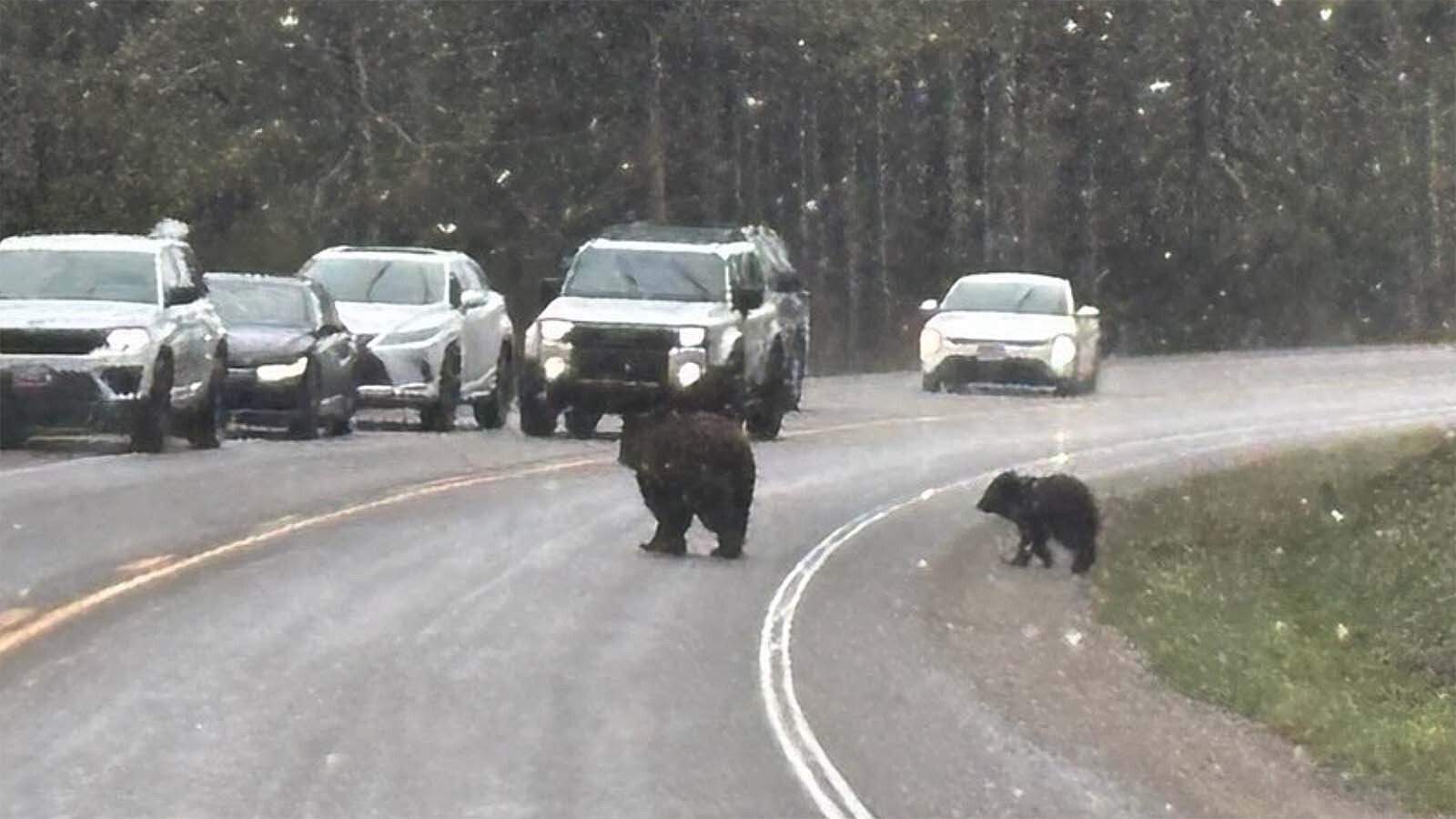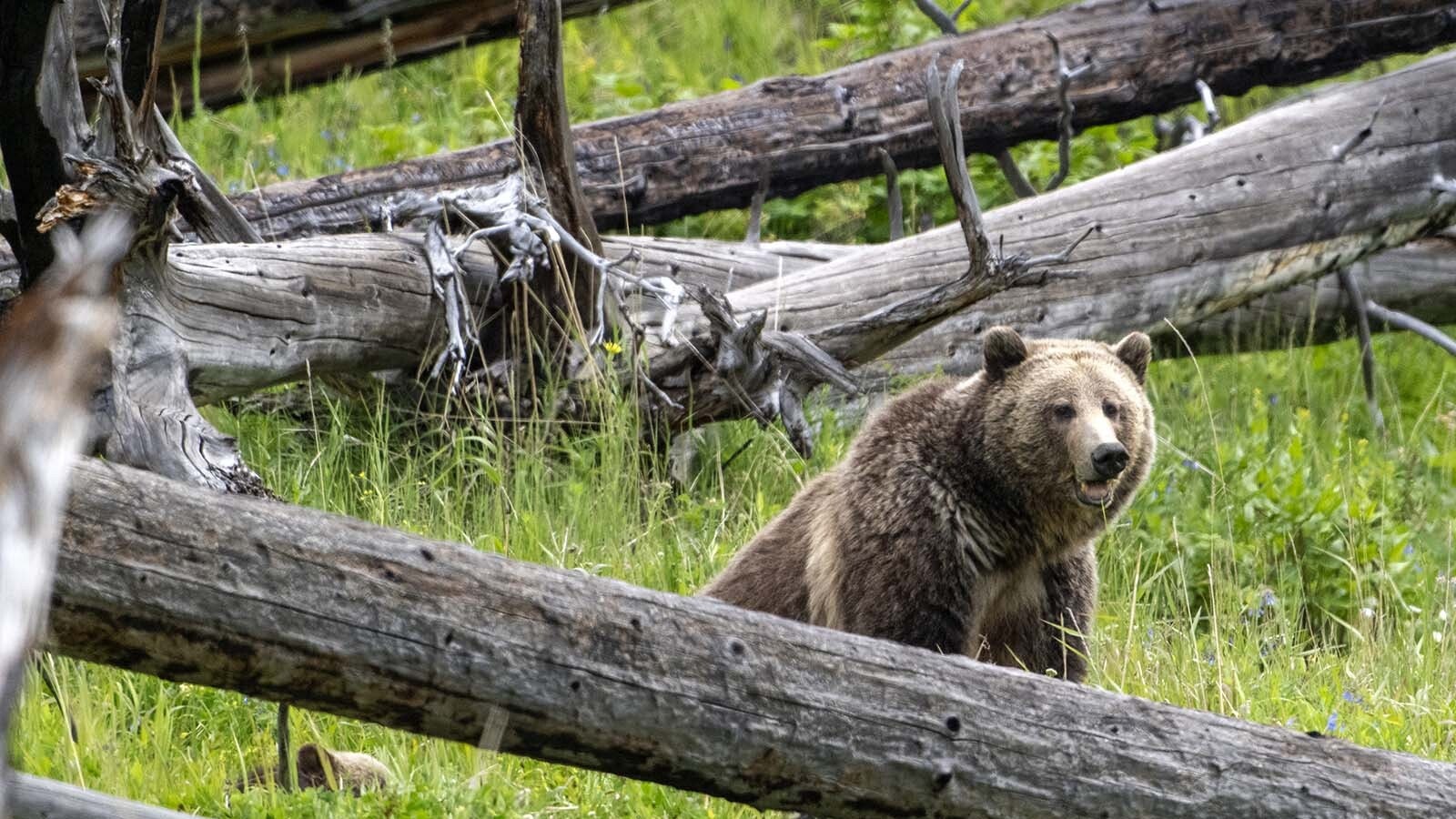As Yellowstone National Park kicked off its 150th anniversary tourism season in May, hopes were high the celebration would draw even more visitors than the nearly 4.9 million seen in 2021, the busiest on record and up 20% from 2020.
But less than six weeks after the park opened for the summer season, a late spring rainstorm caused millions of gallons of water to carve away at hillsides, consume roads and tear away bridges – and homes – on the Yellowstone River.
On Oct. 13, exactly four months from the historic flood event – and a week shy of his fourth anniversary as superintendent of Yellowstone National Park – Cam Sholly led members of the media on a tour of the construction area leading into Yellowstone from the Northeast Entrance.
“The last few have felt like the true definition of dog years,” Sholly said.
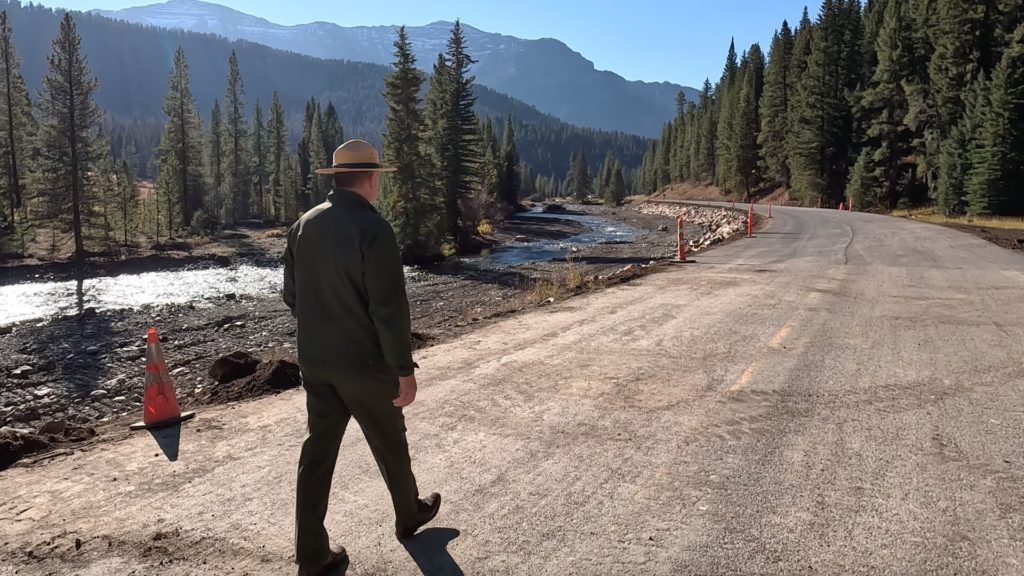

Visitation Takes A Hit
Less than two years after he took over as the park’s superintendent, Sholly oversaw the changes necessary to operate the country’s first national park during a pandemic.
Then on June 13 this year, thousands of visitors found their Yellowstone vacations abruptly halted as Yellowstone National Park officials evacuated the entire park despite flooding only having damaged roads on the north end of Yellowstone. Concerns about water quality prompted close inspections of all of the park’s developed areas, which closed all of Yellowstone for eight days.
The south loop opened first, as it had been determined that the facilities in the northern part of the park had suffered more damage to critical wastewater treatment infrastructure. That meant visitors – the ones who hadn’t already canceled their plans – had to confine their explorations to the areas south of Canyon and Norris.
In a normal year, that concentration of visitation in two-thirds of Yellowstone’s developed areas would have been difficult. But because news of the flood spread so quickly, staffing and infrastructure were not stretched.
“Our car counts show that with the exception of a few days, the South, West and East entrances for most of the summer were below normal entries,” said Sholly. “And so even having to have these two entrances closed, it wasn’t like it pushed everybody to those three – visitation was just lower, so that helped.”
Significantly lower, it turns out.
“My guess is we’ll be around 3.2 (million) this year, in that range, which is significantly lower,” said Sholly.
One reason for visitor cancellations, Sholly surmised, is that first-time visitors didn’t want to miss out on the wonders of the Lamar Valley, where wildlife watching is some of the best in the park.
“Seventy percent of the visitors that come to Yellowstone are first-time visitors, and a huge part of that bucket list is going to Lamar Valley,” he said. “And if you are going to plan your once-in-a-lifetime trip to Yellowstone, but you couldn’t get to Lamar Valley, you might want to wait until you could.”
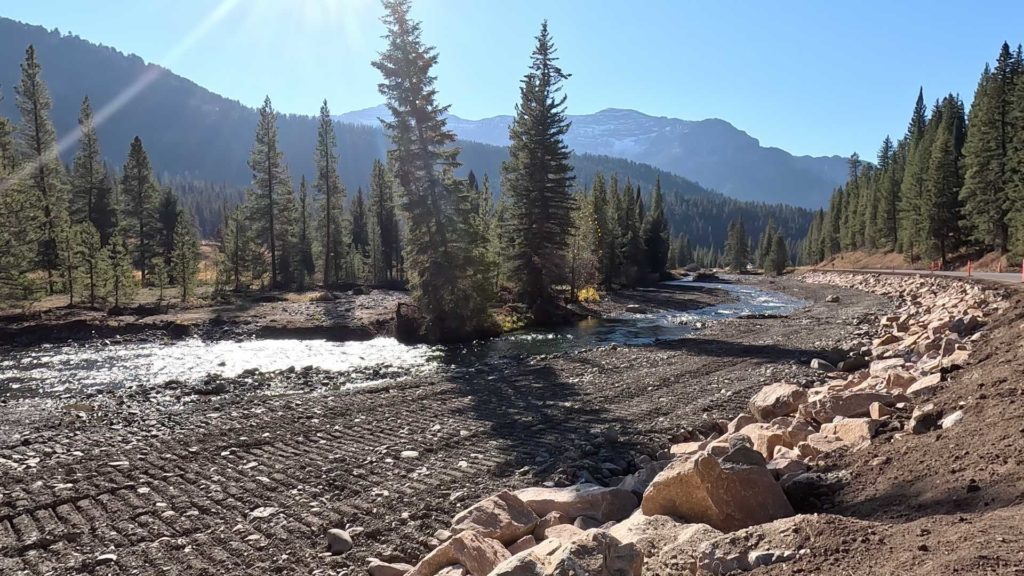

Visitor Management
The ever-increasing number of visitors to Yellowstone has raised a question over the last few years whether the park would someday be forced to implement visitor management systems, like the reservation systems that have been used in Utah recently. Sholly said one benefit to the disaster response efforts was the opportunity to try out various visitor management systems.
“We were able to try some things out, like the alternating license plate system,” he said. “We put a reservation system in place for Tower to Slough Creek, a day-use reservation system. So we were able to kind of experiment with some visitor use management actions that we probably wouldn’t have been able to take, except for under emergency circumstances.”
He said the alternating license plate system worked almost too well.
“We have a lot of data from visitors who really liked it. There was less congestion, parking availability,” Sholly said. “But we had a lot of conversations with Cody and Jackson and West Yellowstone about (whether or not) we were putting enough cars into the park.”
‘A Wakeup Call’
Sholly said although experts have called the flood a “one-in-500-year-event,” that doesn’t mean much.
“We could get another similar event next year, in 10 years, or whatever,” he said. “And in some ways, I think it should be a wakeup call.”
He said most of the Park’s road infrastructure was built in the 1930s and ’40s, when climate change wasn’t part of the conversation.
“It’s a reminder that not only do we need to maintain and improve the infrastructure that we have, we’ve got to really look to the future when we’re making those improvements,” he said, noting that roads throughout Yellowstone are critical for multiple reasons. “How do we make (these improvements) in a way that’s most resilient to future events that might happen?”
Mammoth Hotel Still Not Operational
While the Hot Springs Hotel in Mammoth is still not operational, Sholly said staff hopes to open this winter. The holdup, he said, is that a temporary wastewater plant is being constructed but wasn’t operational for the summer.
“We did not have wastewater capacity sufficient to facilitate having guests and employees and hotels and restaurants,” Sholly said.
However, thanks to some 1960’s-era percolator ponds on the property, the administrative buildings can be safely occupied.
“It works well when the temperature is above freezing,” said Sholly. “It doesn’t work well when it’s below, unless you want to go out and break ice every morning.”
Hope for Winter Economy
With construction wrapping up at both the northeast entrance and north entrances (the Old Gardiner Road is scheduled to open no later than Nov. 1), Sholly said residents of Cooke City and Silver Gate will not be cut off from the rest of civilization, as the only other way out of that region in the summer – to the east, towards Red Lodge and Cody – is cut off by snow during the winter.
But that snow also provides a lively winter economy for the communities, where businesses cater to snowmobilers.
“This is the only road between Cooke City and Gardiner, the only road that’s open to wheeled traffic in the winter,” Sholly said. “And so wildlife watching, wolf watching and snowmobilers coming through to get to Cooke City and that kind of thing are critical components to these winter economies when tourism is at its lowest.”

